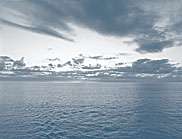Marine forecasting on the horizon for Indian Ocean Rim

Nearly all of the member countries of the Indian Ocean Rim Association for Regional Cooperation (IOR-ARC) will attend the week-long workshop to further cooperation and understanding on international ocean forecasting capabilities and needs in the Indian Ocean. Australia's ocean forecasting system, BLUElink which is used to predict sub-surface ocean conditions for environmental and industrial applications, will be a guide for the meeting.
Workshop convenor, Dr Andreas Schiller from CSIRO's Wealth from Oceans Flagship, said Australia has a long record of working with Indian Ocean Rim countries on marine, climate and oceanographic issues and this week's IOR-ARC workshop will continue that tradition.
"The workshop aims to increase the safety and efficiency of marine operations and improve marine resource management in the region by increasing awareness of the potential uses of ocean forecasting services and building new technical expertise.
"Access to ocean observing and forecasting systems and the ability to visualise and interpret this information will assist Indian Ocean Rim nations in improving preparedness for and dealing with marine disasters, search and rescue, and emergency response activities.
"For Governments and non-Government organisations, there are considerable advantages to using environmental information from ocean forecasting systems to improve the livelihood of local fishermen and for marine industries promoting the sustainability of catch rates through environmental information.
"Ocean observations and ocean forecasting provide the basis on which many of the climate-related coastal features and extremes such as coastal storm surge and tropical cyclone predictions can be assessed and monitored," Dr Schiller said.
CSIRO and Bureau of Meteorology scientists are currently developing the next generation global ocean forecasting models that will predict near-global ocean conditions up to seven days ahead. The models will be of benefit for defence, environmental protection and biodiversity conservation, shipping and recreational marine applications.
The researchers have been working with the Royal Australian Navy to develop the forecasting capability, as part of BLUElink. BLUElink is now operational and forecasts available to the public. Australia has extended that capability and will soon have a capacity to forecast conditions for any of the world's oceans.
Dr Schiller said the need for capacity building in exploiting ocean forecasting has repeatedly been articulated at intergovernmental forums by countries in the region. A complementary capacity building program began five years ago under the Indian Ocean Global Ocean Observing System (IOGOOS) Regional Alliance with the facilitation of the UNESCO Intergovernmental Oceanographic Commission's support office in Perth. Dr Schiller is the current Chair of IOGOOS. Just as for atmospheric weather forecasts, ocean prediction also requires a comprehensive and freely shared ocean observation network.
Although some of the related tools and models are still under development, during the implementation period of a full program it is likely that these tools will be readily available and applicable to the Indian Ocean Rim Association for Regional Cooperation.
Dr Schiller said South African and Indian scientists have already begun ocean research programs to build their own forecasting capabilities.
Provided by CSIRO



















